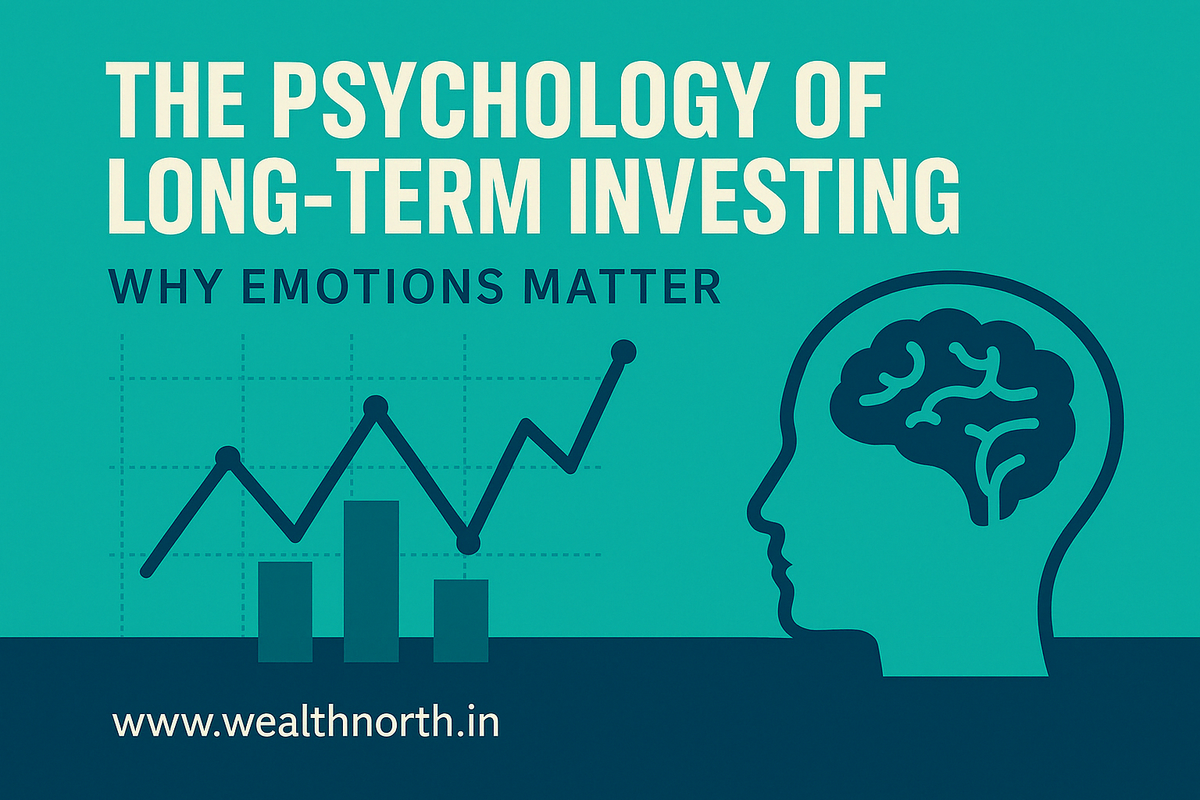The Psychology of Long-Term Investing: Why Emotions Matter

Introduction
Investing isn’t just about numbers, charts, and returns. It’s also about how we think and feel.
In fact, one of the biggest challenges in long-term investing is not the market — it's our own emotions.
Understanding the psychology behind your investing behavior can help you make smarter, calmer, and more confident decisions. Let’s explore how emotions impact investing, and how to stay grounded for the long haul.
The Emotional Cycle of Investing
Markets move in cycles — and so do investor emotions. Here’s a typical emotional rollercoaster that many investors experience:
- Optimism – “This is exciting! I’m finally investing.”
- Euphoria – “I’m making great returns — I’m a genius!”
- Anxiety – “Why is the market going down?”
- Fear – “Should I sell before I lose more?”
- Despair – “I’ve made a mistake. I’ll never invest again.”
- Hope – “Maybe I should try again.”
- Relief – “The market is recovering.”
If you recognize this pattern — you're not alone.
Why Emotions Hurt Long-Term Returns
- Panic selling during a downturn locks in losses
- Overconfidence during a bull run can lead to risky bets
- Short-term noise clouds long-term strategy
- Loss aversion causes more pain from losses than joy from gains
The result? Many investors underperform the very funds they invest in — simply due to emotional decision-making.
How to Stay Emotionally Resilient
Here are some simple ways to avoid emotional traps:
- Invest regularly (e.g., SIPs) — it smooths out the highs and lows
- Focus on goals, not market news
- Avoid checking your portfolio too often
- Remember your time horizon — investing is not a race
- Diversify so no single asset feels like a make-or-break
- Talk to an advisor if you’re feeling uncertain
🔍 A Real-World Example
Imagine two investors:
- Investor A starts a ₹5,000 monthly SIP and never stops — even when markets crash
- Investor B pauses SIPs every time there's volatility
Over 15 years, Investor A likely builds more wealth with fewer regrets — simply by sticking to the plan.
📊 Case Study: UTI Nifty 50 Index Fund – Regular Plan – Growth
This fund mirrors the performance of the Nifty 50 Index, providing a representative benchmark for long-term investing in India’s largest companies.
| Time Period | Annualized Return |
|---|---|
| 1 Year | -0.20% |
| 2 Years | 13.66% |
| 3 Years | 8.87% |
| 5 Years | 20.68% |
| 10 Years | 10.76% |
Source: Moneycontrol
💰 Investor Outcomes
-
Investor A (Consistent SIP)
Invests ₹5,000/month for 15 years
Total Investment: ₹9,00,000
Assumed Return: ~12% CAGR
Estimated Corpus: ₹25.3 lakhs -
Investor B (Interrupted SIP)
Invests ₹5,000/month but pauses during downturns
Total Investment: Lower than ₹9,00,000
Misses key recovery periods
Corpus: Significantly lower
📚 Research Backs This
- Moneycontrol: Even SIPs started at market peaks build wealth over time due to consistency. Read Study
- Dalbar Study: Emotional investing decisions cause individual investors to underperform by 2–3% annually. Read More
- Experts Speak: Radhika Gupta (Edelweiss AMC) and others advise staying consistent rather than timing markets. See Insights
Final Thoughts
Long-term investing rewards the patient and consistent, not the anxious and reactive.
“The stock market is a device for transferring money from the impatient to the patient.” — Warren Buffett
The next time your emotions try to take the wheel, pause.
Revisit your goals. Stay invested. And trust the process.
